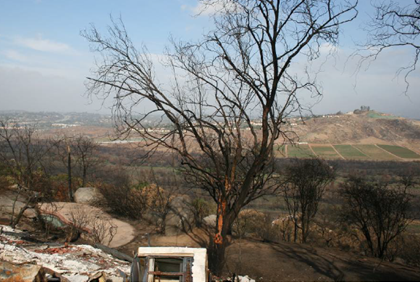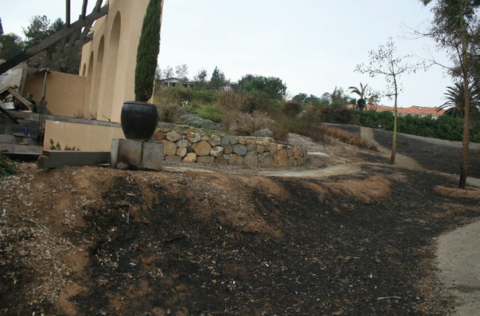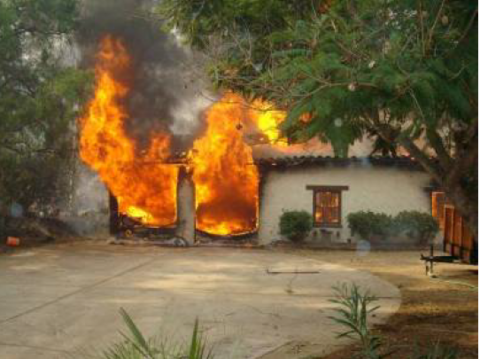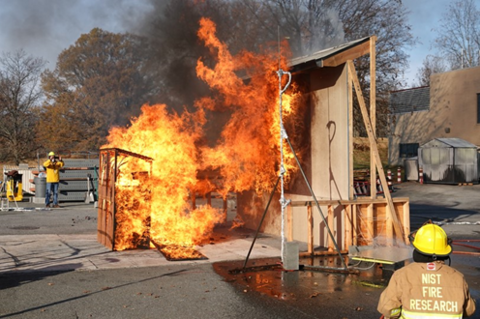How Fire Spreads in the WUI
Preventing or isolating fire throughout a community CAN save homes.
Large destructive fires transition from wildlands into urban/urban-interface conflagrations via radiation, direct flame contact, and ember exposures.
- Radiant exposures occur when large flames from either wildfire or structural fires are close to exposed structural elements. The intensity of thermal radiation reduces with increasing distance.
- Direct flame contact occurs when flames from nearby fires, such as burning wood piles, vegetation, or structures come in direct contact with structural components.
- Embers are responsible for the majority of structure losses in WUI fires. Embers present high fire hazards as they can:
- directly ignite exterior structural components by radiant heating.
- accumulate and the pile of smoldering embers can ignite the fuel which may transition to flaming.
- penetrate the structure via openings and ignite flammable components within the structure.
- ignite vegetative fuels and other combustibles.
- spread fire hours after the "fire front" has passed.
Structure ignitions can be characterized into four categories, described below:
Category A (uninterrupted vegetative fire or ember ignition): defined as potential structure ignition due to the uninterrupted spread of fire through vegetation to the structure. By definition, all structures at the perimeter of the WUI community belong to this category. (Not all perimeter structures necessarily ignite by this method; however, determining the ignition pathway after the fire has occurred is often not possible.)

Category B (vegetative fire or ember ignition): defined as structure ignition due to the burning of vegetative fuel in the periphery of the structure. The ignition of peripheral vegetative fuel could have occurred by ember exposures before the fire front approached.

Category C (ember ignition): defined as structure ignitions solely by ember exposure, often due to ember intrusion into the structure and igniting the combustibles within the structure. This type of exposure can be identified by the presence of unburned vegetation surrounding the structure and absence of direct flame exposure from vegetation.

Category D (structure-to-structure ignition): defined as structure ignitions from radiant and convective heating by flames from a burning neighboring structure. This type of structure-to- structure flame spread is typically observed in high density communities.


